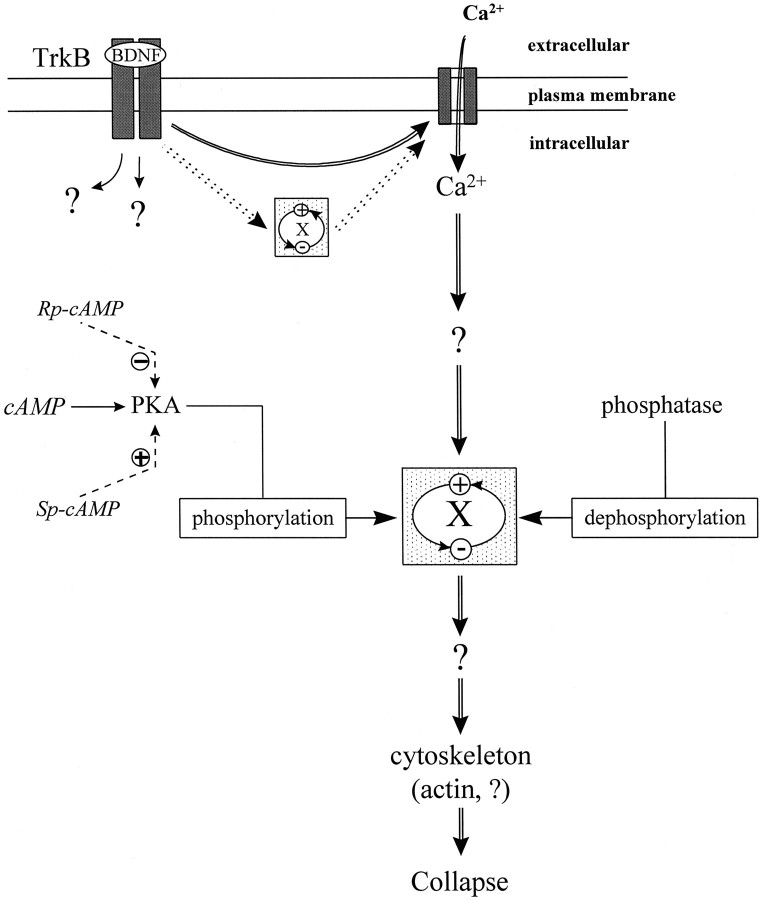Fig. 8.
Schematic diagram showing the proposed model involved in the cAMP regulation of BDNF-induced collapse. Activation of TrkB receptors by BDNF induces multiple intracellular signaling cascades including a Ca2+ influx through Ca2+ channels, and the Ca2+pathway mediates the collapsing effect (double lineswith arrows). Although the unknown protein X is involved in the main Ca2+-signaling pathway for collapse, its activity can be modulated by phosphorylation and dephosphorylation by cAMP-dependent activity (single lines witharrows). PKA phosphorylates and inactivates (−) X, whereas phosphotase(s) dephosphorylate(s) and activate(s) (+) X. An equilibrium between the active and inactive X is likely reached in the cell. Experimental manipulation of PKA activity by (Rp)-cAMP or (Sp)-cAMP (dashed lines with arrows) can change the equilibrium and thus regulate the collapsing effect of BDNF. Activation of PKA by (Sp)-cAMP causes more X to become inactive, leading to the blockade of the collapsing effect; inhibition of the resting level of PKA activity by (Rp)-cAMP results in more active X, leading to the potentiation of the collapsing effect induced by the low concentrations of BDNF. Alternatively, the cAMP-mediated regulation can be upstream of Ca2+. In this case, the protein X mediates BDNF-induced Ca2+ influx required for growth cone collapse (dotted double lines witharrows), and its activity can be regulated by cAMP-dependent activity in a similar way.

